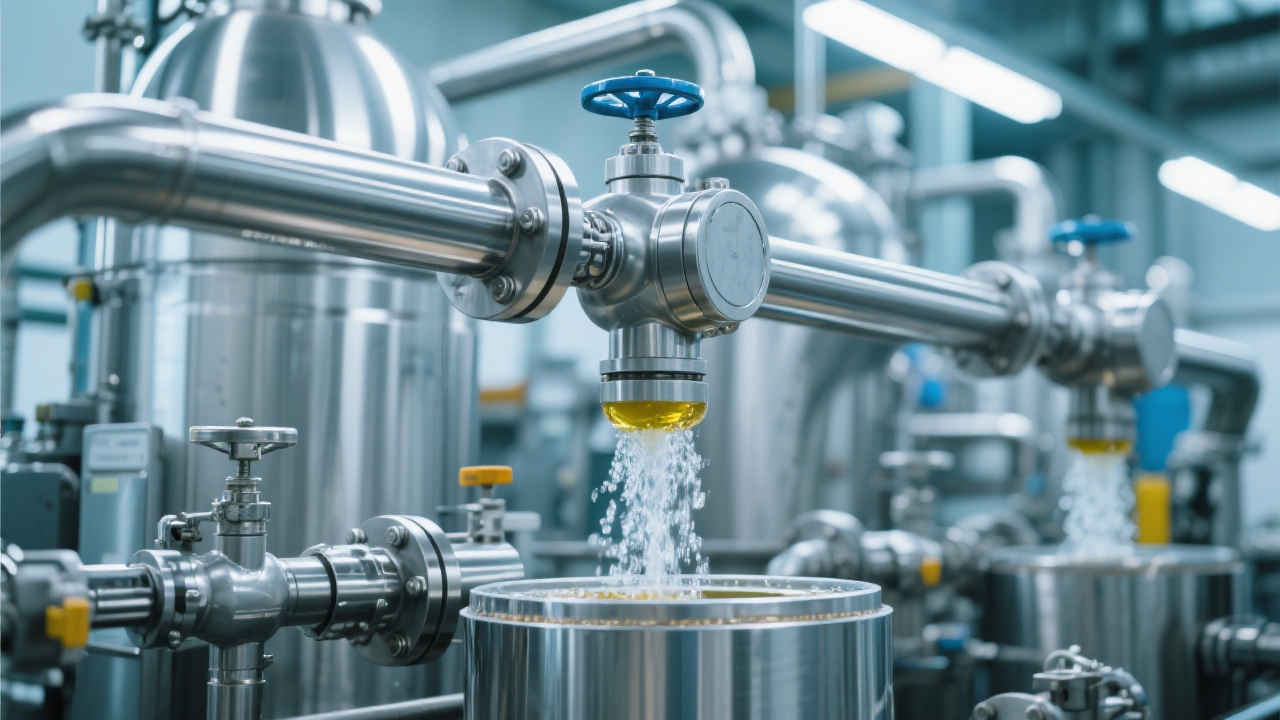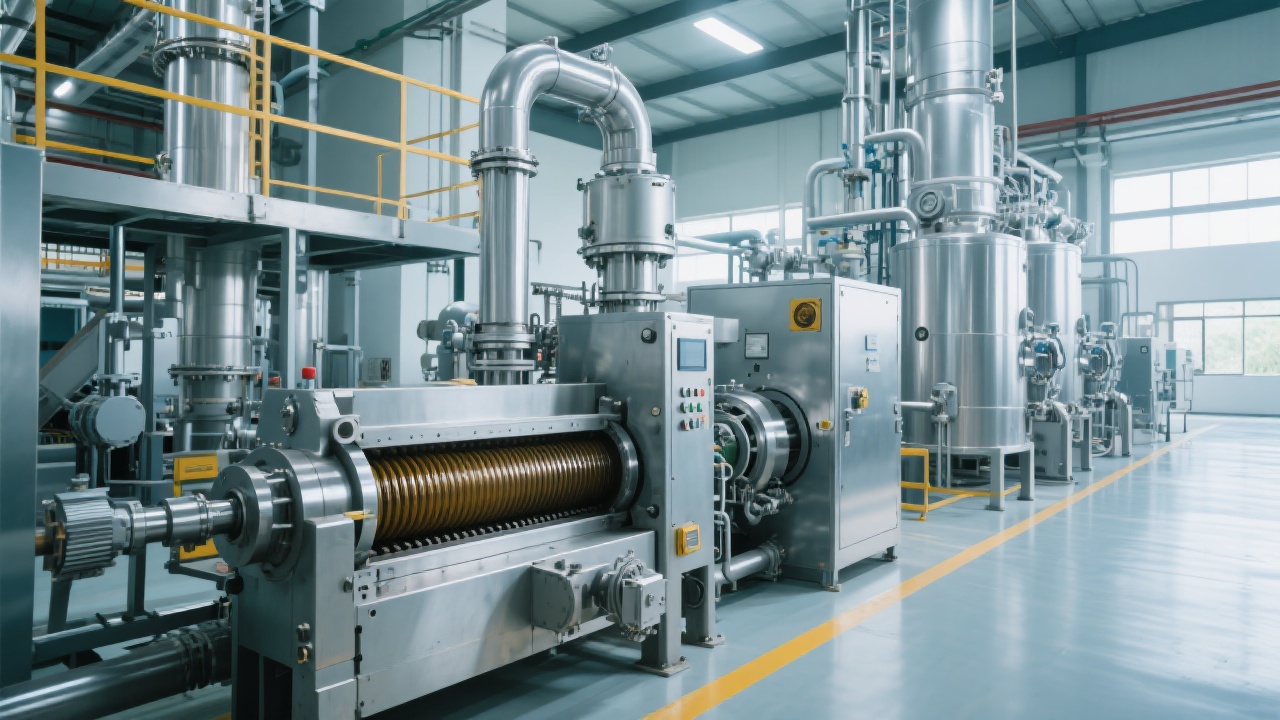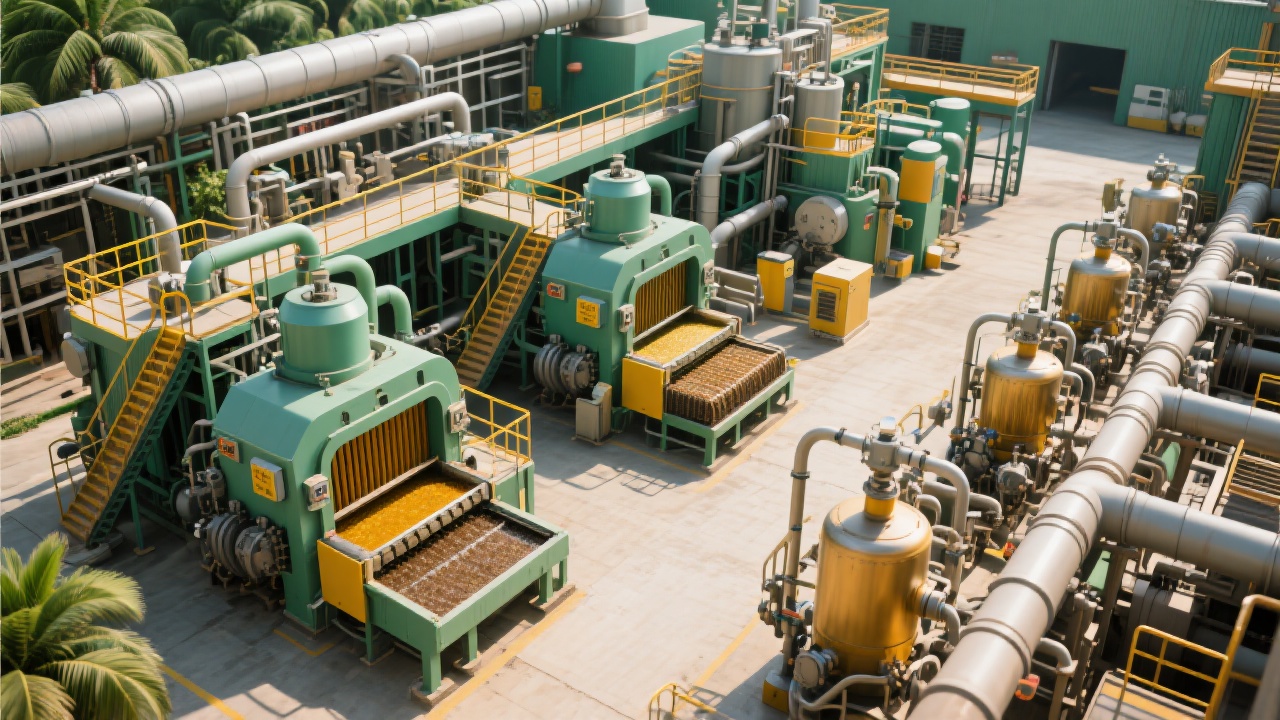
Rice bran oil, known for its rich nutritional value and health benefits, has gained significant popularity in the global market. However, to meet the high - quality standards demanded by consumers, an advanced refining process is essential. This article delves into the core technologies and equipment configuration schemes in the rice bran oil refining process, with a special focus on the application of new high - efficiency deodorization equipment in overseas markets.
The refining of rice bran oil mainly consists of four core steps: degumming, deacidification, decolorization, and deodorization. Each step plays a crucial role in improving the quality of the final product.
Degumming is the first step in the refining process, aiming to remove phospholipids and other gummy substances from crude rice bran oil. The working principle of degumming equipment is to use water or acid to hydrate and precipitate these impurities. By choosing the appropriate degumming equipment, food processing enterprises can achieve a high degumming efficiency of up to 95%. For example, modern centrifugal degumming equipment can separate impurities quickly and effectively, reducing the impact of impurities on subsequent processes.

Deacidification is used to remove free fatty acids from the oil. There are several methods for deacidification, such as chemical deacidification and physical deacidification. Chemical deacidification uses alkalis to react with free fatty acids to form soaps, which can be removed by separation. Physical deacidification, on the other hand, uses steam distillation to remove free fatty acids. Advanced deacidification equipment can reduce the acid value of rice bran oil to less than 0.1 mg KOH/g, significantly improving the stability and quality of the oil.
Decolorization is mainly to remove pigments and other colored substances from the oil. Activated clay or activated carbon is commonly used as a decolorizing agent. The decolorization equipment works by adsorbing colored substances onto the surface of the decolorizing agent. High - performance decolorization equipment can achieve a high decolorization rate, reducing the Lovibond color value of rice bran oil to a very low level, making the oil more transparent and appealing.
Deodorization is the final and most critical step in the refining process. It is used to remove unpleasant odors and volatile substances from the oil. Traditional deodorization equipment has some limitations in terms of efficiency and odor removal effect. However, new high - efficiency deodorization equipment has emerged in recent years, which has significant advantages.
In overseas markets, many food processing enterprises have adopted new high - efficiency deodorization equipment, achieving remarkable results. For example, a food processing company in Europe replaced its old deodorization equipment with a new high - efficiency model. After the upgrade, the deodorization efficiency increased by 30%, and the quality of the rice bran oil improved significantly. The peroxide value of the oil decreased by 20%, and the sensory quality of the oil was also greatly enhanced, meeting the strict quality standards of the European market.

Another case is from Asia. A large - scale food processing enterprise in Japan introduced new deodorization technology, which not only improved the quality of rice bran oil but also reduced energy consumption by 25%. This not only saved production costs but also enhanced the enterprise's competitiveness in the market.
To optimize the rice bran oil refining process, food processing enterprises need to carefully select equipment based on their production scale and quality requirements. When choosing degumming equipment, factors such as degumming efficiency, ease of operation, and maintenance cost should be considered. For deacidification equipment, the choice between chemical and physical methods depends on the acid value of the crude oil and the final product requirements.
In terms of decolorization and deodorization equipment, new and advanced models should be preferred to ensure high - quality products. By optimizing the equipment configuration and process flow, enterprises can improve the overall efficiency of the refining process and the quality of the final product.

In conclusion, the upgrading of rice bran oil refining technology, especially the application of new high - efficiency deodorization equipment, is an inevitable trend in the industry. By adopting advanced technology and equipment, food processing enterprises can improve the quality of their rice bran oil products, enhance their competitiveness in the global market, and meet the growing demand for high - quality edible oils. If you want to learn more about the latest rice bran oil refining technology and equipment, click here to explore our advanced solutions!

